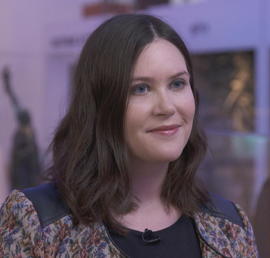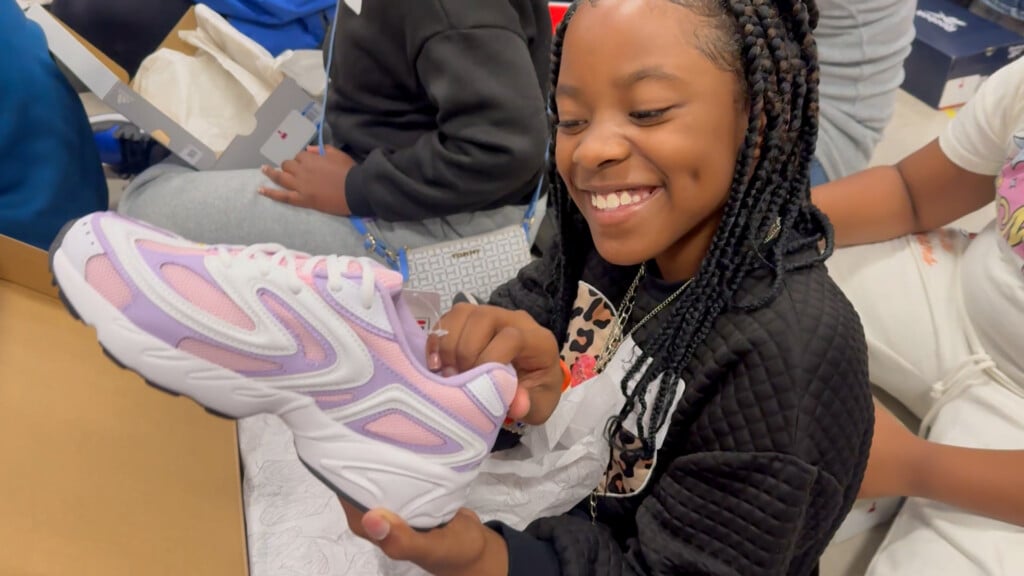Museum uses American artifacts to help immigrants become citizens
On the bottom floor of New York City’s oldest museum groups of immigrants are working to become American citizens. Green card holders like Ingrid Kaminski – who’s been in the U.S. for 57 years – are part of the Citizenship Project, a free, six-week course that uses artifacts from the New York Historical Society to help students pass the civics test required to become a citizen, reports CBS News’ Alex Wagner.
In the classroom, a map demonstrates how the Louisiana Purchase doubled the size of the United States, but the real lesson happens at the exhibit. A wine stain on the official document signed by Napoleon is a small detail that can help students better remember America’s history.
“When you think about it you think about the fact that he was just a regular human. I’m a wine drinker so I think about it like it happens to me,” Hiroshima Aguero said. She immigrated from the Dominican Republic just eight months ago. She’s taking the course with her mother.
“For me, America’s always been a great country,” Aguero said. “And learning about the culture and, well deeper, and about the history is even more important. And it makes you feel very happy, and it makes you feel you actually made the right decision of coming over.”
New York Historical Society offers a free, six-week course to help students pass the civics test required to become a citizen
CBS News
The Historical Society, in partnership with the City University of New York, began the project after President Trump announced a travel ban on certain visitors at the start of his administration. While the ban is still working its way through the courts, his current immigration proposal aims to cut legal immigration in half.
Jen Schantz is executive vice president and chief operating officer of the historical society. She maintains that what they’re doing is apolitical.
“We’re not a political organization. We don’t make political statements. We really are doing what we are supposed to do. And our mission is to teach American history, so that’s what we’re doing and we’re just doing it in a way that helps an immigrant community just like it helps the general public,” Schantz said.
It turns out the curriculum was also created by immigrants. Samantha Rijkers, a green card holder from the Netherlands, is the project’s manager and a class teacher.

CBS News
“My students tease me about it all the time when I mention that I don’t have it yet. And they say, ‘well, you better pass, otherwise it will be very embarrassing,”‘ Rijkers said.
She said the hardest question to pair with an artifact was: “What is the rule of law?”
“Which is first of all a difficult question. I think if you would ask an American citizen, ‘what is the rule of law?’ they wouldn’t be able to say, ‘Nobody is above the law, everyone must follow the law,’ which is the right answer,” she said. “I connected that to the Boston Massacre because John Adams actually represented the British soldiers and he stated, ‘I did this because the rule of law is more important.’ If we’re just going to judge these people and let mob rule rule the country, then we are not going to be a civilized nation.”
The course celebrates American history, but doesn’t rewrite it. Some of the most difficult chapters to teach are about slavery and Civil Rights.
“When we teach about westward expansion in our geography lesson….We teach about Andrew Jackson’s Indian Removal Act,” Rijkers said.
On display is a statue of Osceola, the Florida Seminole who resisted surrender of native lands to white settlers.
“That was very important to me because those are often groups that are not included in the questions on the test, but we want to show that they’re also part of American history and that the history of the United States is very complicated. And we think that’s important for new citizens to know,” she said.
There, the legacies of America’s past sit side-by-side with the promises of its future.
“This should never stop. I will, you know, recommend this course and this project to anybody who is finally making the decision to become an American citizen,” Aguero said.





Leave a Reply